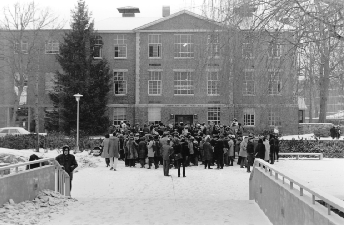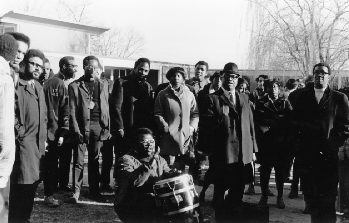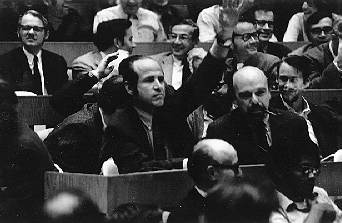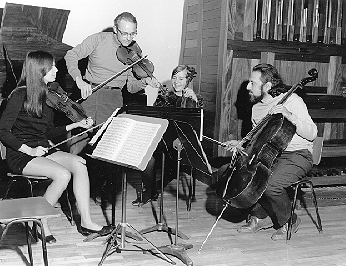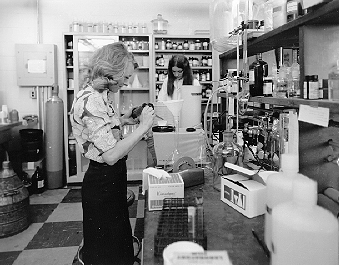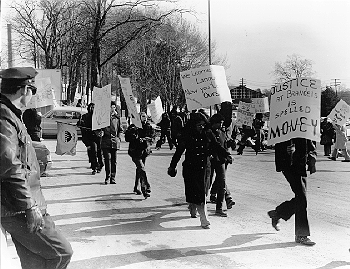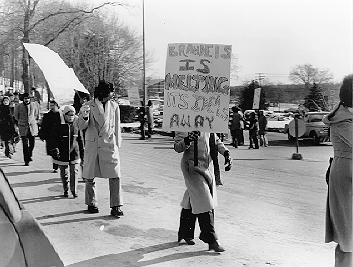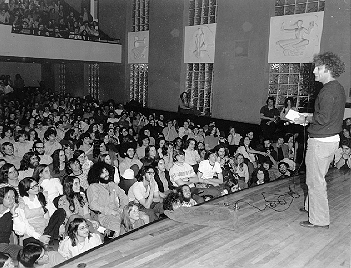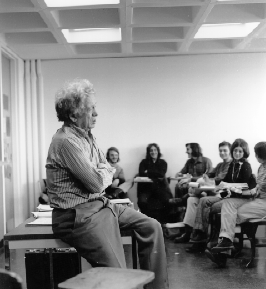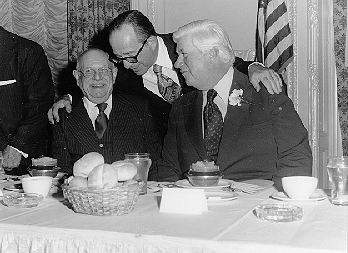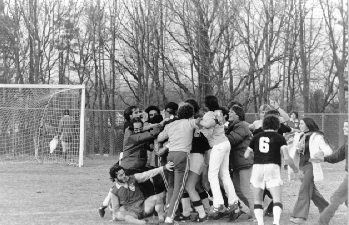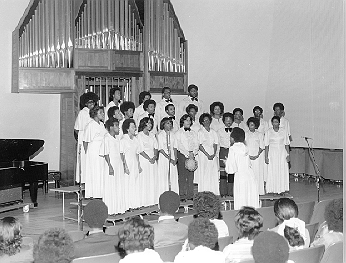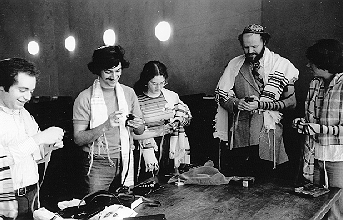The Third Decade

"It was not easy to be affiliated with an institution of higher learning at the end of the '60s and earlier '70s. The problems were confronted not only by Morris Abram, Brandeis' second president, but by all college presidents nationwide. Those were years of unrest on every college campus, even the most venerable. Indeed student revolt was an international phenomenon, from the barricaded streets of Paris to the strike-prone university in Mexico City."
— Ruth G. Rose, President, Brandeis University National Women's Committee, 1957-1960
Ruth Rose's observations appropriately place Brandeis' third decade into historical context. When Morris Abram, former national president of the American Jewish Committee, took office in fall 1968 as the university's second president, he found a campus seething with the discontent of the era. To have succeeded Abram Sachar would have been a challenging task in the calmest of times; in the late '60s, with political passions on all fronts at the boiling point, it was all but impossible. Abram's presidency weathered a series of crises, including an 11-day takeover of Ford Hall by members of the Brandeis Afro-American Organization. By the end of his second year, the Trustees were again searching for a new president.
They settled on Charles Schottland, founding dean of the Heller School and former Commissioner of the Social Security Administration. Schottland accepted the position of Acting President in 1970, and the following year the "Acting" was dropped from his title. He made clear to the Board that he planned to serve only a brief term, and at the end of his second year in office he stepped down in favor of Marver Bernstein, the former dean of Princeton's Woodrow Wilson School of Public Affairs who now became Brandeis University’s fourth president.
These were still troubled times. It was during Schottland's presidency that a group of radical students participated in a bank robbery that lead to the death of a police officer. By the mid-'70s, the worst excesses of campus radicalism had passed, but Brandeis began to feel the same financial constraints the rest of the nation faced in those economically difficult years.
In spite of these worries, the university went ahead with its plans for long-term growth. On the athletics front, the newly built Linsey Sports Center served as home to Brandeis basketball coach K.C. Jones, who had recently retired as a player for the Boston Celtics. Other new construction included the Pollack Fine Arts Teaching Center, completed in 1972, and the addition of a new wing to the Rose Art Museum in 1974. Space for the sciences grew dramatically with the completion of the Rosenstiel Basic Medical Research Center (1972) and the Foster Biomedical Research Labs (1975). The new Feldberg Computer Center (1972) provided a permanent home for the university’s expanding technology resources.
The roster of high-profile public figures appearing at Brandeis continued to lengthen during the third decade. Prominent visitors ranged from Alger Hiss, who spoke here in 1968 at the height of the protest movement, to Israeli Prime Minister Golda Meir, who came in 1973 to receive an honorary degree in celebration of the university's — and Israel's — 25th-anniversary year. And in 1977, Angela Davis ’65 returned to her alma mater to speak before an enthusiastic crowd of over 900.
The decade was capped off by the Blizzard of ’78, which paralyzed the campus for four days and included an extended power outage for several dorms while a flu-bug affected several hundred students.
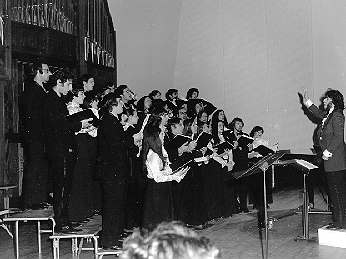 Jewish Arts Festival Week March 2, 1974
Jewish Arts Festival Week March 2, 1974
"This is a photo of the Zamir Chorale of Boston, a chorus of college-age and post-college-age young adults in the Boston area. It is an independent chorus not affiliated with any one institution in the area. The chorus sings mostly Hebrew and Yiddish songs, as well as some English songs and longer pieces dealing with Jewish or Biblical themes, such as Stravinsky's Symphony of Psalms, Leonard Bernstein's Chichester Psalms and the music of Salamone Rossi. The Music Director, then and now, is Joshua Jacobson, who is also a professor of music and the Director of Choral Activities at Northeastern University. Zamir has a very nice website.
"I was actually a member of the chorus in the mid-'70s and sang in that very performance, hidden away in the tenor section. The top half of my head is visible if you look down the right edge of the pipe organ."
David Noreen
University Libraries
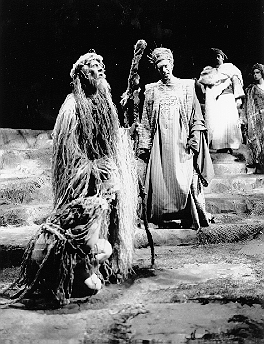 Oedipus Rex Production, 1974
Oedipus Rex Production, 1974
"I was in this production of ‘Oedipus the King’ which ran from April 23 through May 4, 1974. I still have the program from this production, as well as the review by Kevin Kelly from the Boston newspaper. His headline read: ‘A Stunning Oedipus at Brandeis.’ I had the small, inconsequential role of one of ‘The Children,’ but it was a privilege to be on the mainstage of Spingold as a sophomore theatre arts major. The production was directed by the late Charles Werner Moore, our beloved acting guru, and starred Ian McElhinney and Jack Axelrod (a guest artist-in-residence.) The costumes were quite unusual in that they made us all look like prehistoric cave dwellers. We were also all required to slather our entire bodies in a stage make-up called ‘Texas dirt’ which was this deep clay red paint that stayed on your skin long after the production ended!"
Elena Nierman Widder Class of 1976
Theatre Arts
